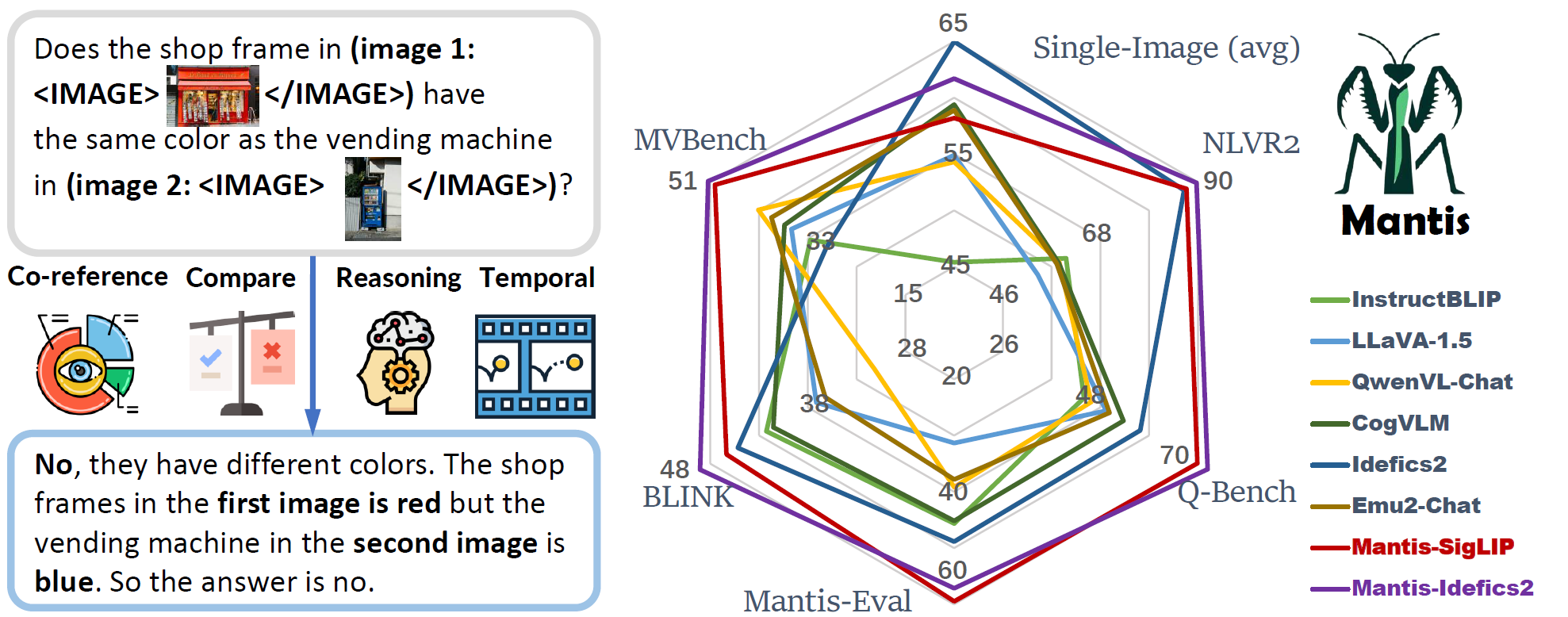Welcome to an insightful guide on leveraging the power of Mantis-Fuyu, a cutting-edge language model that interprets interleaved text and images. It’s your go-to tool for multi-image understanding, excelling in reasoning, comparing, and co-referencing images. In this post, we’ll walk you through the installation, usage, and troubleshooting of this remarkable model.
What is Mantis-Fuyu?
Mantis-Fuyu is a powerful language model tailored for processing interleaved text and image inputs. Trained on the Mantis-Instruct dataset, it showcases impressive capabilities across multiple benchmarks, pushing the frontiers of multimodal AI. To give you a visual representation of its strengths, here’s a radar chart showcasing its performance:

Installation
Setting up Mantis-Fuyu is straightforward. Follow these steps to get started:
- Open your command line interface (CLI).
- Run the following command to install the necessary packages:
pip install git+https://github.com/TIGER-AI-Lab/Mantis.gitThis command will install the required packages for inference without any unnecessary installations.
Running Example Inference
Now that we have it installed, let’s dive into how to run inference using Mantis-Fuyu. Think of this process as a chef preparing a dish. The images are your ingredients, the code is your recipe, and the model is your cooking expertise.
Follow these steps:
- Prepare and load your images:
from mantis.models.mllava import chat_mllava
from PIL import Image
import torch
image1 = "image1.jpg"
image2 = "image2.jpg"
images = [Image.open(image1), Image.open(image2)]Here, you’re selecting the images (ingredients) you want to analyze.
- Load the model and processor:
from mantis.models.mfuyu import MFuyuForCausalLM, MFuyuProcessor
processor = MFuyuProcessor.from_pretrained("TIGER-Lab/Mantis-8B-Fuyu")
model = MFuyuForCausalLM.from_pretrained("TIGER-Lab/Mantis-8B-Fuyu", device_map='cuda', torch_dtype=torch.bfloat16)Just like a chef preheating the oven, this step prepares your model for processing.
- Now you can start asking questions:
generation_kwargs = {
'max_new_tokens': 1024,
'num_beams': 1,
'do_sample': False,
'pad_token_id': processor.tokenizer.eos_token_id,
}
text = "Describe the difference of image1 and image2 as much as you can."
response, history = chat_mllava(text, images, model, processor, **generation_kwargs)
print("USER:", text)
print("ASSISTANT:", response)This is the moment of truth; you’re employing your model to dish out insightful analysis on your visual inputs!
Troubleshooting
If you encounter issues while using Mantis-Fuyu, here are some troubleshooting tips:
- Make sure your images paths are correct—double-check your filenames.
- Ensure that your environment supports the required libraries (torch, transformers, etc.). You can reinstall them if necessary.
- If the model fails to load, make sure your GPU setup is correct or switch to CPU mode.
- Restart your Python runtime to clear any prior state that might interfere.
For more insights, updates, or to collaborate on AI development projects, stay connected with fxis.ai.
Conclusion
At fxis.ai, we believe that such advancements are crucial for the future of AI, as they enable more comprehensive and effective solutions. Our team is continually exploring new methodologies to push the envelope in artificial intelligence, ensuring that our clients benefit from the latest technological innovations.
With Mantis-Fuyu at your disposal, the world of multimodal AI is at your fingertips. Embrace the future of image and text understanding today!

